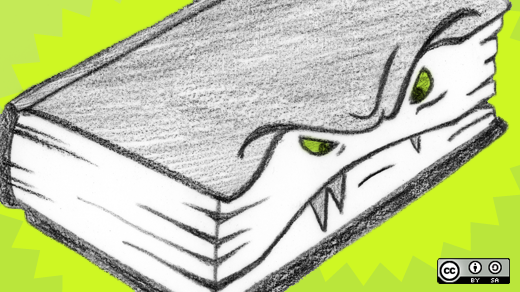Forty years ago, John Holt wondered whether an educational revolution as profound as open education could survive unless it became part of a wider and deeper movement of social change. Until open source and the concept of an open education began to take hold, John Holt's vision of an open education seemed to be a pipe dream.
In 2009, Open High School of Utah made history by becoming the first public school to rely completely on open content for its instructional subject matter. This created flexible, student-centered learning. Still, the textbook industry has great power over education from kindergarten to graduate school.
Around the world, governments, technology leaders, and textbook publishers are calling on the adoption of e-textbooks. Tom Malek, an executive at McGraw-Hill, recently declared that college students should be forced to buy new e-books instead of new or used paper textbooks. In February 2012, the Federal Communications Commission and the United States Department of Education released the Digital Textbook Collaborative, a group of technology companies and textbook publishers to help accelerate digital textbook adoption in schools with little input from educators. In South Korea, there is a great push to digitize textbooks in elementary, middle, and high schools by 2015.
Proponents of digital textbooks claim that they are cheaper, make it easier to update content, and can be more interactive than their paper counterparts. Though American university students spend over $4.5 billion on textbooks, they spend very little on digital textbooks. Apple, Amazon, Microsoft, and other technology leaders have been closely eyeing the adoption of digital textbooks as a source of revenue.
Textbooks in general (whether paper or digital) have their critics. These critics contend that there are many inherent problems with textbooks and their use. First, the concept of an inclusive, authoritative textbook is flawed and outdated. Second, controversial events or topics are often ignored or subject to the interests of various political groups. Third, multiple viewpoints or perspectives are often discounted for an overarching, unified single account.
In Lebanon, for instance, history textbooks end at 1943, the year the country gained independence, and few schoolchildren question this absence. Likewise, some major science textbooks in South Korea's secondary schools have deleted examples of Darwinism. These kinds of practices pose problems for digital textbooks, too.
Critics of textbooks also point out the diminished role of women and minorities--even in modern texts. For example, high school and college textbooks frequently contain little information on the impact of women's involvement in subjects such as history or science. This implies that women were of little importance or consequence, which has an impact on future generations. The lack of female representation in math and science textbooks is a particularly thorny issue.
Additionally, rather than aiding or increasing critical thinking, critics of textbooks complain that textbooks are static. Books foster a singular type of learning that leads to rote, fact-based learning primarily based on written words and numbers rather than images or audio. This often leads to a controlled, fixed mindset and can suppress our natural sense of discovery and curiosity.
Though textbook adoption is often hotly contested, especially at the high-school level, textbooks play a critical role in the dissemination of knowledge and the transmission of cultural values.
Today, textbooks remain the principal means of instruction. They become the basis of, the structure, and the sequence of knowledge, from kindergarten to higher education. For many children, textbooks are their first introduction to the written word. And yet, many textbooks contain biases, intolerances, stereotypes, and inaccuracies that renders them obsolete and an outdated medium in this bigger age of open source and digital technology.
Children in the US and across the globe have no intellectual freedom with regard to textbook adoption--policy makers or state leaders make these decisions. Few students in higher education have a say in textbook adoption, either. Instructors in higher education are often required to use a textbook, which may already be selected, or strongly recommended or advised to do so. Does requiring that higher-education students buy digital textbooks compromise intellectual freedom?
While open textbooks are freely available and accessible, three academic publishers–Pearson, Cengage, Learning, and Macmillan Higher Education filed a copyright lawsuit with start-up Boundless Learning in March 2012 over intellectual property rights and copyright infringement for producing free and open textbooks as alternatives to printed material.
Boundless Learning aims to connect students to high-quality, open-licensed and free educational content. However, different types of open education resources (OER) already exist. The lawsuit seems to point to the overriding dilemma with the concept of textbook adoption.
Students have access to a tremendous amount of OER material, including courses, course materials, lesson plans, and library collections or archives. OER bypasses the textbook approach to learning. Despite the publishing industry's pending lawsuit against Boundless Learning, it does not prevent teachers or students from using OER themselves or directing their own learning through sites such as OER Commons or Curriki.
Knowledge conveyed in digital textbooks cannot cope with the social changes brought on by open source or the intellectual freedom that ensues. Textbook-based learning is often an interpretation of or an arrangement of a set facts based on an author or editor's viewpoint.
Sets of facts are not protected by copyright law and can be freely obtained and exchanged today using open source. In contrast to textbook-based learning, open source allows users to create content and knowledge and share it with others. For instance, students can learn about the Salem Witchcraft Trials of 1692 from reading the original court documents and applying their own interpretations.
Similarly, students can study math by using material from OER Commons, Curriki, Open Math Reference, Khan Academy, or any open educational resources available today.
These materials--and the many others like them on the Internet and in libraries today--allow students to direct their own learning experience. There is no need to rely on a textbook or teacher for direction or arrangement of facts.







7 Comments